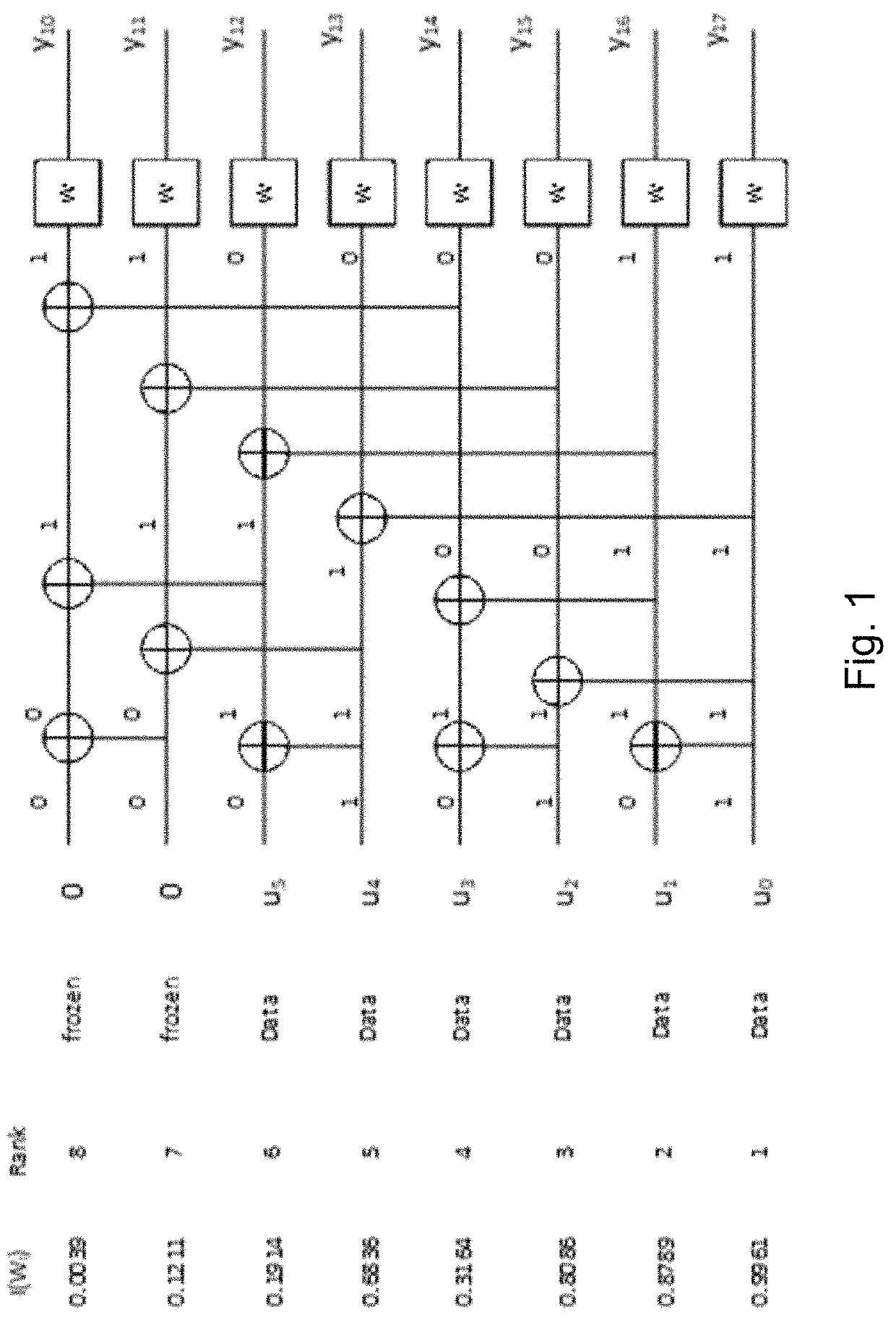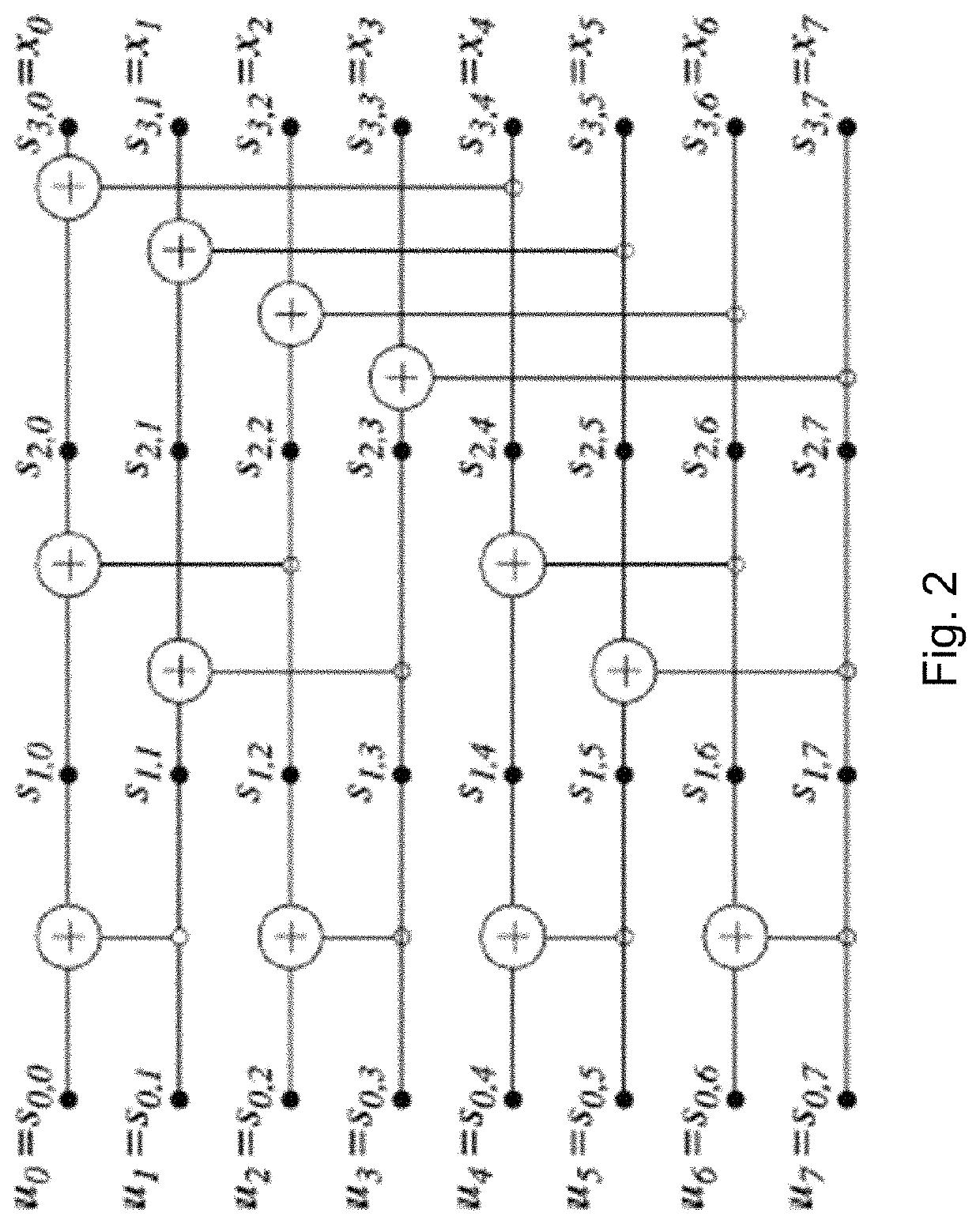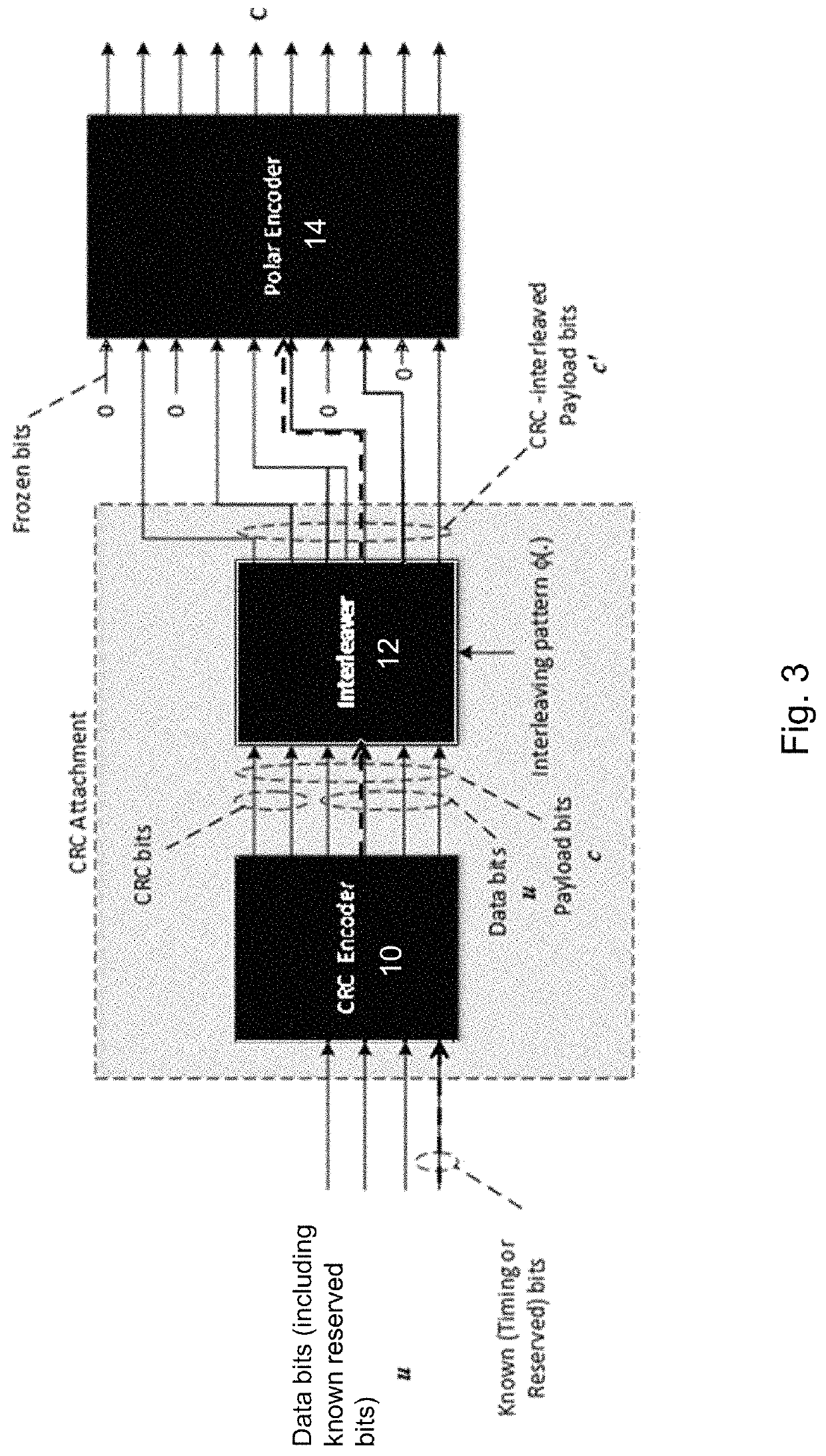Information bits for polar codes with mixed criteria
a technology of information bits and polar codes, applied in the field of wireless communications, can solve the problems of inconvenient polar codes with sc, inconvenient coding schemes, and inability to match the full length performance of sc, and achieve the effect of avoiding the loss of information bits
- Summary
- Abstract
- Description
- Claims
- Application Information
AI Technical Summary
Benefits of technology
Problems solved by technology
Method used
Image
Examples
example 1a
[0086]Known bits are placed at the earliest decoding positions to achieve early termination benefits:
[0087]
Indices for Placement beforePBCH Bit FieldsCRC InterleaverSS Block Time Index (3 bits);[0, 2, 3]
[0088]An example is illustrated in FIG. 6. FIG. 6 illustrates a set of known bits to be placed in the earliest decoding positions, according to a particular embodiment.
[0089]Known bits to be placed at the least reliable positions to achieve error performance enhancements after placing the above bits:
[0090]
Indices for PlacementPBCH Bit Fieldsbefore CRC InterleaverSFN (2nd, 3rd LSBs) (2 bits);24, 6Half Frame Indication (1 bit)7SFN (1st, 4th, 5th , . . . , 9th, 10th10, 30, 8, 17, 18, 23, 16, 20,LSBs) (8 bits)Other PBCH Fields (42 bits)11, 19, 29, 28, 25, 21, 35, 4,12, 41, 37, 26, 14,42, 31, 13, 44, 32, 22, 34, 48,5, 27, 36, 33, 15,38, 43, 46, 39, 45, 1, 49, 50,9, 52, 40, 47, 51,53, 54, 55
[0091]An example is illustrated in FIG. 7. FIG. 7 illustrates a set of known bits to be placed in th...
example 1b
[0092]Known bits to be placed at the earliest decoding positions to achieve early termination benefits (an example is illustrated in FIG. 6):
[0093]
Indices for PlacementPBCH Bit Fieldsbefore CRC InterleaverSS Block Time Index (3 bits);[0 2 3]
[0094]Known bits to be placed at the least reliable positions to achieve error performance enhancements after placing the above bits:
[0095]
Indices for Placement beforePBCH Bit FieldsCRC InterleaverSFN (2nd, 3rd LSBs) (2 bits);24 6SFN (1st, 4th, 5th, . . . , 9th, 10th7 10 30 8 17 18 23 16LSBs) (8 bits)Half Frame Indication (1 bit)20Other PBCH Fields (42 bits)11 19 29 28 25 21 35 4 12 41 37 2614 42 31 13 44 32 22 34 48 5 27 3633 15 38 43 46 39 45 1 49 50 952 40 47 51 53 54 55
[0096]An example is illustrated in FIG. 8. FIG. 8 illustrates another set of known bits to be placed in the bit positions with lowest reliabilities, according to a particular embodiment.
example 1c
[0097]Known bits to be placed at the earliest decoding positions to achieve early termination benefits (an example is illustrated in FIG. 6):
[0098]
Indices for Placement beforePBCH Bit FieldsCRC InterleaverSS Block Time Index (3 bits);[0 2 3]
[0099]Known bits to be placed at the least reliable positions to achieve error performance enhancements after placing the above bits:
[0100]
Indices for Placement beforePBCH Bit FieldsCRC InterleaverHalf Frame Indication (1 bit)24SFN (2nd, 3rd LSBs) (2 bits);6 7SFN (1st, 4th, 5th , . . . , 9th, 10th10 30 8 17 18 23 16 20LSBs) (8 bits)Other PBCH Fields (42 bits)11 19 29 28 25 21 35 4 12 41 3726 14 42 31 13 44 32 22 34 48 5 27 3633 15 38 43 46 39 45 1 49 50 9 52 4047 51 53 54 55
[0101]An example is illustrated in FIG. 9. FIG. 9 illustrates another set of known bits to be placed in the bit positions with lowest reliabilities, according to a particular embodiment.
PUM
 Login to View More
Login to View More Abstract
Description
Claims
Application Information
 Login to View More
Login to View More - R&D
- Intellectual Property
- Life Sciences
- Materials
- Tech Scout
- Unparalleled Data Quality
- Higher Quality Content
- 60% Fewer Hallucinations
Browse by: Latest US Patents, China's latest patents, Technical Efficacy Thesaurus, Application Domain, Technology Topic, Popular Technical Reports.
© 2025 PatSnap. All rights reserved.Legal|Privacy policy|Modern Slavery Act Transparency Statement|Sitemap|About US| Contact US: help@patsnap.com



